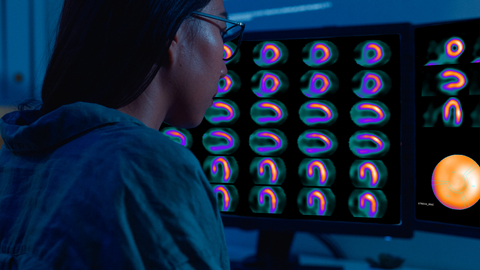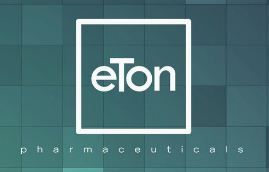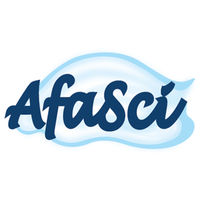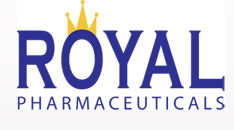预约演示
更新于:2025-11-24
Ethanol
乙醇
更新于:2025-11-24
概要
基本信息
非在研机构- |
最高研发阶段批准上市 |
首次获批日期 日本 (2003-10-06), |
最高研发阶段(中国)- |
特殊审评- |
登录后查看时间轴
结构/序列
分子式C2H6O |
InChIKeyLFQSCWFLJHTTHZ-UHFFFAOYSA-N |
CAS号64-17-5 |
关联
113
项与 乙醇 相关的临床试验NCT07027839
Acute Effects of Alcohol on PET Imaging of Phosphodiesterase-4B (PDE4B)
Background:
Phosphodiesterase-4B (PDE4B) is a protein in the brain that may play a role in several mental health disorders. Researchers want to know if drinking alcohol increases the binding of a radioactive tracer to PDE4B in the brain because of increased activity and/or amount of the protein. This knowledge may help create new ways to treat people with alcohol use disorder (AUD).
Objective:
To learn if alcohol increases PDE4B activity in the brain.
Eligibility:
Healthy people aged 21 to 70 years who drink socially but do not have AUD. They must be enrolled in protocol 14-AA-0181"NIAAA Natural History Protocol".
Design:
Participants will have up to 4 clinic visits with up to 3 imaging scans of the brain; these will include 1 or 2 positron emission tomography (PET) scans and 1 magnetic resonance imaging (MRI) scan.
The first PET scan will be a baseline. Participants will receive a radioactive tracer through a tube inserted into a vein. A second tube will be inserted so that blood can be drawn during the scan. Participants will lie on a bed that slides into a doughnut-shaped machine. This visit will take about 6 hours.
For the next PET scan, participants will receive alcohol (ethanol) through a tube in a vein until they have a blood alcohol concentration that is equal to the legal driving limit. This is the same as 4 or 5 drinks for most people. After the scan, participants must remain at the clinic for a few hours until their blood alcohol drops. This visit will take 14 to 16 hours.
The MRI scan of the brain will take up to 2 hours in a separate clinic visit.
Phosphodiesterase-4B (PDE4B) is a protein in the brain that may play a role in several mental health disorders. Researchers want to know if drinking alcohol increases the binding of a radioactive tracer to PDE4B in the brain because of increased activity and/or amount of the protein. This knowledge may help create new ways to treat people with alcohol use disorder (AUD).
Objective:
To learn if alcohol increases PDE4B activity in the brain.
Eligibility:
Healthy people aged 21 to 70 years who drink socially but do not have AUD. They must be enrolled in protocol 14-AA-0181"NIAAA Natural History Protocol".
Design:
Participants will have up to 4 clinic visits with up to 3 imaging scans of the brain; these will include 1 or 2 positron emission tomography (PET) scans and 1 magnetic resonance imaging (MRI) scan.
The first PET scan will be a baseline. Participants will receive a radioactive tracer through a tube inserted into a vein. A second tube will be inserted so that blood can be drawn during the scan. Participants will lie on a bed that slides into a doughnut-shaped machine. This visit will take about 6 hours.
For the next PET scan, participants will receive alcohol (ethanol) through a tube in a vein until they have a blood alcohol concentration that is equal to the legal driving limit. This is the same as 4 or 5 drinks for most people. After the scan, participants must remain at the clinic for a few hours until their blood alcohol drops. This visit will take 14 to 16 hours.
The MRI scan of the brain will take up to 2 hours in a separate clinic visit.
开始日期2025-11-26 |
NCT06719908
A Double-blind, Placebo-controlled, Phase I Study of the Pharmacokinetic and Pharmacodynamic Interaction of Oral AFA-281 With Alcohol in Healthy Volunteers
The goal of this clinical trial is to evaluate if alcohol interacts with the drug candidate AFA-281 in adults (healthy volunteers). This trial will evaluate blood concentration levels of AFA-281 and ethanol. The main questions it aims to answer are: Does alcohol interact with AFA-281? What are the side effects (if any)? Researchers will compare AFA-281 to a placebo (a look-alike substance that contains no drug) to see if AFA-281 interacts with alcohol.
Participants will take a total of 4 treatment sessions separated by at least 2 days between treatments. The treatments will incorporate AFA-281 or placebo with ethanol or ethanol placebo. After each treatment vital signs will be monitored and blood collected to measure AFA-281 and ethanol levels. Participants will provide an assessment survey of symptoms. The total treatment time will be 9 inpatient days (8 nights), and a final follow-up visit 3 to 5 days after clinic discharge.
Participants will take a total of 4 treatment sessions separated by at least 2 days between treatments. The treatments will incorporate AFA-281 or placebo with ethanol or ethanol placebo. After each treatment vital signs will be monitored and blood collected to measure AFA-281 and ethanol levels. Participants will provide an assessment survey of symptoms. The total treatment time will be 9 inpatient days (8 nights), and a final follow-up visit 3 to 5 days after clinic discharge.
开始日期2025-07-01 |
申办/合作机构 |
NCT06819189
Role of Metal Ion Transporter ZIP8 in Alcohol Related Behaviors
Background:
Alcohol use disorder (AUD) can damage people s health, work, and family. Researchers want to know more about why some people are more vulnerable to AUD than others. The ZIP8 gene may be linked to an increased risk of AUD. Researchers want to find out how different forms of the ZIP8 gene affect how healthy people drink alcohol and how alcohol affects their brain.
Objective:
To study how genes may affect how people drink alcohol and how it affects their brain.
Eligibility:
Healthy people aged 21 to 60 years. They must not smoke, and they must have no history of AUD. They must have European ancestry and be enrolled in Natural History Protocol (14-AA-0181).
Design:
Participants will have 2 study visits.
At the first visit, participants will be given alcohol; it will be infused through a tube attached to a needle inserted into a vein. They may self-administer each dose by pressing a button. Over time, they will have to press the button an increasing number of times to receive more alcohol. The infusion period will last 2.5 hours.
Participants will have blood samples taken and breath measurments, and they will do computer tasks and complete questionnaires during and after the infusion. After the infusion, they will remain in the clinic until their breath alcohol levels drop to a safe level.
At the second visit, participants will have an imaging scan of their brain. They will do tasks and play games on a computer screen during the scan.
Some participants may have an extra visit for screening. A mid-study visit may also be needed if more than 6 months pass between the 2 study visits....
Alcohol use disorder (AUD) can damage people s health, work, and family. Researchers want to know more about why some people are more vulnerable to AUD than others. The ZIP8 gene may be linked to an increased risk of AUD. Researchers want to find out how different forms of the ZIP8 gene affect how healthy people drink alcohol and how alcohol affects their brain.
Objective:
To study how genes may affect how people drink alcohol and how it affects their brain.
Eligibility:
Healthy people aged 21 to 60 years. They must not smoke, and they must have no history of AUD. They must have European ancestry and be enrolled in Natural History Protocol (14-AA-0181).
Design:
Participants will have 2 study visits.
At the first visit, participants will be given alcohol; it will be infused through a tube attached to a needle inserted into a vein. They may self-administer each dose by pressing a button. Over time, they will have to press the button an increasing number of times to receive more alcohol. The infusion period will last 2.5 hours.
Participants will have blood samples taken and breath measurments, and they will do computer tasks and complete questionnaires during and after the infusion. After the infusion, they will remain in the clinic until their breath alcohol levels drop to a safe level.
At the second visit, participants will have an imaging scan of their brain. They will do tasks and play games on a computer screen during the scan.
Some participants may have an extra visit for screening. A mid-study visit may also be needed if more than 6 months pass between the 2 study visits....
开始日期2025-06-10 |
100 项与 乙醇 相关的临床结果
登录后查看更多信息
100 项与 乙醇 相关的转化医学
登录后查看更多信息
100 项与 乙醇 相关的专利(医药)
登录后查看更多信息
319,243
项与 乙醇 相关的文献(医药)2026-02-01·SPECTROCHIMICA ACTA PART A-MOLECULAR AND BIOMOLECULAR SPECTROSCOPY
Dual-optical response probe to HSO3− and HClO via ICT and solvatochromic effects for food and cellular applications
Article
作者: Zhang, Siyun ; Bai, Ruiyang ; Zhu, Chenxin ; Sun, Hongxia ; Xu, Yiping ; Lang, Yunhe ; Zhang, Xiufeng ; Yuan, Xinyu ; Shi, Lei
Sulfite (HSO3-) and hypochlorous acid (HClO) serve as essential food additives and key raw materials in bleaching agents. However, excessive consumption of these compounds may disrupt cellular redox homeostasis, leading to a series of adverse physical effects. Therefore, the development of reliable analytical methods to detect HSO3- and HClO levels in food products is of significant importance. In this study, we developed a hemicyanine dye-based fluorescent probe (TBA) for the sensitive and selective detection of HSO3- and HClO. The probe incorporates distinct recognition sites (a CC bond for HSO3- and an -NH2 group for HClO) operating in different solvent systems to enable dual-analyte discrimination. TBA exhibited excellent sensitivity, with detection limits (LOD) of 1.1 μM for HSO3- (60 min response) in water and 10.7 μM for HClO (40 s response) in ethanol. Furthermore, the probe was successfully adapted into a portable test strip format, demonstrating reliable quantification in real samples (recovery: 88.97-104.88 %). In addition, TBA displayed mitochondria-targeted capability, allowing its application in live cells HSO3- imaging.
2025-12-31·Green Chemistry Letters and Reviews
Optimizing batch distillation parameters for enhanced bioethanol purification from fermentation
作者: Sari, Komang Nickita ; Tauviqirrahman, Mohammad ; Nugraha, Reva Edra ; Ammarullah, Muhammad Imam ; Sari, Ni Ketut ; Ernawati, Dira ; Lestari, Wahyu Dwi
This study aims to improve the purity of bioethanol produced from Bioethanol Recycle of Enzyme Fermentation (BR-EF) by employing batch distillation and absorption techniques.A distillation column with raschig rings and mol. sieve was used, with an initial BR-EF volume of 1 L and concentrations ranging from 15% to 35% (volume/volume).The distillation process, conducted at 78°C using microwave heating, lasted between 2-6 h.The optimal bioethanol concentration of 97.72% (volume/volume) was achieved with a 30% (volume/volume) BR-EF concentration and a 4-h distillation time.Optimal response with a bioethanol concentration of 99.824% (volume/volume).The ideal conditions for Multiple Response Prediction were determined to be flow rate of adsorption and weight of silica gel are 0.116 and 58.295.Further optimization was performed using MATLAB (Matrix Laboratory) and Differential Expert (DE) to assess the impact of BR-EF concentration and distillation time on bioethanol yield, with results visualized in a 3D response surface graph.This study offers valuable insights into optimizing bioethanol production, enhancing its purity and market potential.
2025-12-31·Essential Chem
Synthesis of functionalized benzocycloheptene analogs
Article
作者: Kharbanda, Shivangi ; Alkhamayseh, Osaid ; Weaver, Jimmie D. ; Eastham, Georgia
The benzocycloheptene core is structurally important motif that appears within a wide array of natural products, and benzocycloheptene has recently been demonstrated to undergo [3+2] photo-sensitized cycloaddition reactions. Thus, there is a need for efficient synthetic protocols to access this motif. Herein, we provide efficient strategies to achieve highly functionalized benzocycloheptene derivatives starting from commercially available 1-benzosuberone and 1-tetralone. We anticipate that these benzocycloheptene compounds will serve as excellent precursors for a diverse array of chemical reactions.
77
项与 乙醇 相关的新闻(医药)2025-11-18
·有驾
脂质纳米颗粒(Lipid Nanoparticles, LNP)与脂质体(Liposomes)是当代核酸类药物递送技术体系中的核心平台。尽管反义寡脱氧核苷酸(ODN)、质粒 DNA(pDNA)、siRNA 与 mRNA 等核酸药物已在实验与临床中展现出显著潜力,但其体内递送仍依赖高效且安全的载体系统。然而,传统方法在脂质体封装聚阴离子核酸时面临 封装效率低、颗粒稳定性不足、循环寿命短以及阳离子脂质相关毒性偏高 等难题。
在此背景下,对阳离子脂质的结构调控、可离子化脂质的配方策略、多溶剂体系构建以及PEG-脂质的稳定性作用的深入探索成为推动核酸递送技术发展的关键方向。基于这一研究基础,中新康明构建了以DOTAP为核心的专用新型配方体系,旨在提升ODN和pDNA等核酸分子的封装效率与体内药代动力学表现,并形成可应用于工业化的CDMO工艺平台。
一、新型DOTAP配方体系的理论基础与工艺策略
传统使用阳离子脂质封装ODN或pDNA的方法,通常依赖电荷复合形成脂质复合物。然而此类复合物往往具有结构松散、颗粒不均一、易聚集以及体内毒性偏高等缺陷,难以满足临床需求。相比之下,近年来 DODAP 等可离子化脂质的发展为核酸封装工艺的优化提供了显著启发。
中新康明在此基础上,结合DOTAP的结构优势与电荷特性,形成如下关键技术路线:
1. 乙醇参与的缓冲体系构建
通过引入高达 40%(v/v)乙醇含量的混合溶剂体系,打破单一水相条件下核酸–脂质结合效率受限的局面。乙醇具有以下作用:
促进DOTAP在核酸接触阶段快速组织化
降低脂质双层能量,使脂层更容易包覆核酸
改善脂质在酸性条件下的扩散与成膜行为
该方法能够实现远高于传统复合方法的核酸负载量(可达约 0.15–0.25 g ODN/g total lipid)。
2. 在酸性条件下促进DOTAP质子化
DOTAP本身为季铵盐结构,带永久正电,但实验表明在弱酸条件(pH 3–5)下其与核酸的结合动力学更为有利。新型工艺将配方构建阶段置于酸性环境,可实现:
更充分的DOTAP–核酸复合
更均一的颗粒结构
更高的封装效率(最高可达约 70%)
3. PEG-修饰脂质的加入防止颗粒聚集
PEG-脂质(如PEG-DMG、PEG-DSPE)在配方中具有双重作用:
抑制DOTAP与核酸快速不均一聚集
在中性pH值下提供稳定的空间位阻,提升体内循环寿命
4. 构建SALP(Stable Antisense Lipid Particles)类结构
中新康明通过冷冻电镜与31P NMR证实:
DOTAP新型工艺形成的颗粒呈 单层与小多层囊泡的混合群体
粒径集中在80–140 nm
构型与经典SALP体系高度相似
这证明DOTAP在该工艺下具备构建高稳定性核酸颗粒的能力。
二、结构与功能表征:全面评估DOTAP新型工艺的可行性
中新康明建立了系统性的检测与验证体系,以支持DOTAP工艺优化及量产需求。主要包括:
1. 封装效率的定量评估
基于多种核酸检测方法:
RiboGreen / PicoGreen / OliGreen
核酸酶保护实验
原位酶解分析
确保封装率可稳定达到 60–70%。
2. 颗粒结构与物理特性分析
DLS测粒径与 PDI
Zeta potential测电位
Cryo-EM观察囊泡结构
31P NMR评估核酸定位状态
通过上述体系,能够精确确认颗粒结构的均一性以及核酸封装模式。
3. 稳定性研究
包括:
长期与加速稳定性
乙醇残留与pH变化监测
体外血浆稳定性
该工艺所得DOTAP颗粒可在多周至数月范围内保持稳定粒径。
4. 体内循环与药代研究支持
与游离核酸或传统DOTAP复合物相比,新型颗粒具备:
明显延长的体内循环寿命
更佳的组织分布特征
显著降低的急性毒性.
三、中新康明在DOTAP原料供应与CDMO工艺链条方面的系统能力建设
通过多年技术积累,中新康明已构建起涵盖DOTAP从原料到制剂的全流程平台。
1.DOTAP大包装原料提供能力
多级生产线,实现公斤至百公斤级批量供应
高纯度DOTAP(HPLC/NMR/LC-MS 可证)
低水分、低溶剂残留、低内毒素
支持GMP标准生产
可满足 LNP/mRNA 疫苗、反义药物、基因治疗等不同需求。
2. 工艺开发能力
涵盖:
DOTAP配方优化
PEG-脂质筛选
乙醇体系条件控制
pH梯度调控
流体混合/微流控工艺评估
可实现从毫升级到百升级的全阶段开发。
3. 中试与商业化放大
基于 T-mixing、microfluidic、ethanol injection 等工艺平台,中新康明可实现:
重复性强的批间一致性
工艺参数可控可追溯
从 GLP→GMP 的无缝切换
满足 IND 用批与商业化批次的生产要求。
4. CMC 与注册支持
包括:
分析方法开发/验证
批记录与工艺验证
稳定性研究体系建立
IND 和 NDA 申报资料撰写
DMF 提交与国际注册支持
助力客户加速实现核酸药物从研发到临床的转化。
四、结语:基于DOTAP的递送体系将成为核酸治疗的重要组成
基于DOTAP的新型配方工艺不仅在封装效率、稳定性与体内药代动力学方面实现显著提升,其制备工艺也具备高度可控性和可扩展性,使其成为 nucleic acid therapeutics 领域的重要载体选择。
中新康明将持续深化DOTAP、DODAP、DODMA 等阳离子与可离子化脂质的材料研究,并通过稳定的原料供应体系、专业的配方工艺开发平台以及成熟的CDMO体系,为全球核酸药物研发团队提供强有力的技术与产业化支持。
信使RNA寡核苷酸siRNA核酸药物
2025-11-17
CVAUSA, the largest network of private cardiology groups in the U.S., plans to broadly adopt Flyrcado in line with its mission to deliver the highest quality cardiovascular care for patients.
CVAUSA currently performs approximately 85,000 cardiac positron emission tomography (PET) procedures annually, highlighting the potential opportunity for Flyrcado as adoption grows.
GE HealthCare remains committed to driving innovation and collaborating with leading cardiology groups to advance PET myocardial perfusion imaging (MPI) technology.
ARLINGTON HEIGHTS, Ill.--(BUSINESS WIRE)--GE HealthCare (Nasdaq: GEHC) today announced that Cardiovascular Associates of America (CVAUSA), the largest network of private cardiology groups in the U.S., plans to broaden its adoption of GE HealthCare’s FDA-approved cardiac positron emission tomography (PET) radiotracer Flyrcado™ (flurpiridaz F 18) injection, across approximately 25 sites following a successful pilot at Cardiovascular Medicine in Davenport, Iowa. This planned rollout marks a significant milestone for advancing PET myocardial perfusion imaging (MPI) in community cardiology settings and reflects growing confidence in Flyrcado’s role in shaping the future of cardiac imaging.
The pilot at Cardiovascular Medicine provided cardiologists with an opportunity to evaluate Flyrcado in real-world workflows. “The pilot demonstrated that Flyrcado can be seamlessly integrated into a high-volume cardiac PET practice,” said Dr. Edmund Coyne, former President of Cardiovascular Medicine. “In our Davenport location, we routinely perform 12+ cardiac PET scans a day, and during our two-week, 21 patient pilot, we found that Flyrcado fits smoothly into that workflow without disruption. We saw firsthand the benefits in diagnostic confidence and efficiency, as well as excellent image quality, and we look forward to seeing these advantages scaled across CVAUSA’s network.”
“Our mission is to deliver the highest quality cardiovascular care, and expanding the use of advanced cardiac PET imaging is a key part of that,” said Tim Attebery, Chief Executive Officer of CVAUSA. “We perform approximately 85,000 cardiac PET procedures annually across our network, and following a successful pilot with Flyrcado, we’re excited to bring this technology to more of our sites—helping our partner cardiologists make more informed decisions for patients with known or suspected coronary artery disease.”
“We are encouraged by the adoption of Flyrcado in a variety of real-world settings—including large academic institutions, integrated delivery networks (IDNs), mobile PET/CT settings, and customers transitioning from SPECT to PET MPI,” said Eric Ruedinger, Vice President and General Manager of GE HealthCare’s Pharmaceutical Diagnostics division for the U.S. and Canada. “The accumulating real-world evidence shows Flyrcado’s versatility and efficacy across diverse clinical environments, laying the foundation for continued growth and confidence in this game-changing tracer.”
Recent milestones underscore the growing importance of Flyrcado in clinical practice. GE HealthCare announced a distribution and services agreement with CDL Nuclear Technologies to support implementation across multiple sites of care, including private cardiology practices. In addition, Flurpiridaz F 18 is now featured in a new international procedure standard co‑published by leading societies—SNMMI, ASNC, EANM, and ACNM—in The Journal of Nuclear Medicine1 and Journal of Nuclear Cardiology. These guidelines highlight Flurpiridaz F 18 high myocardial uptake, almost linear extraction fraction relationship, and superior spatial resolution compared to SPECT and outline best practices for patient selection, rest/stress protocols, and workflow integration—further validating the tracer’s role in delivering high‑quality, safe, and effective cardiac PET imaging.
GE HealthCare’s Pharmaceutical Diagnostics division is a global leader in imaging agents used to support around 130 million procedures per year globally, equivalent to four patient procedures every second. Its Molecular Imaging portfolio combines established proprietary products across cardiology, neurology and oncology, with an innovative pipeline, all aimed at enabling better informed diagnosis and monitoring for improved therapy decision making and clinical outcomes.
About GE HealthCare Technologies Inc.
GE HealthCare is a trusted partner and leading global healthcare solutions provider, innovating medical technology, pharmaceutical diagnostics, and integrated, cloud-first AI-enabled solutions, services and data analytics. We aim to make hospitals and health systems more efficient, clinicians more effective, therapies more precise, and patients healthier and happier. Serving patients and providers for more than 125 years, GE HealthCare is advancing personalized, connected and compassionate care, while simplifying the patient’s journey across care pathways. Together, our Imaging, Advanced Visualization Solutions, Patient Care Solutions and Pharmaceutical Diagnostics businesses help improve patient care from screening and diagnosis to therapy and monitoring. We are a $19.7 billion business with approximately 53,000 colleagues working to create a world where healthcare has no limits.
GE HealthCare is proud to be among 2025 Fortune World’s Most Admired Companies™.
Follow us on LinkedIn, X, Facebook, Instagram, and Insights for the latest news, or visit our website https://www.gehealthcare.com for more information.
Forward-Looking Statements
This release contains forward-looking statements. These forward-looking statements might be identified by words, and variations of words, such as “will,” “expect,” “may,” “would,” “could,” “plan,” “believe,” “anticipate,” “intend,” “potential,” and similar expressions. These forward-looking statements may include, but are not limited to, statements about Flyrcado and GE HealthCare Technologies Inc.’s (the “Company’s”) performance, growth opportunities, and strategy. These forward-looking statements involve risks and uncertainties, many of which are beyond the control of the Company. Factors that could cause the Company’s actual results to differ materially from those described in its forward-looking statements include, but are not limited to, uncertainties regarding the commercial success of Flyrcado, the Company’s ability to receive pass-through status from the US Centers for Medicaid and Medicare, and decisions by regulatory authorities impacting labeling, manufacturing processes, safety, or other matters that could affect the availability or commercial potential of Flyrcado. Other factors that may cause such a difference also include those discussed in the "Risk Factors" section of the Company’s Annual Report on Form 10-K filed with the U.S. Securities and Exchange Commission and any updates or amendments it makes in future filings. There may be other factors not presently known to the Company or which it currently considers to be immaterial that could cause the Company’s actual results to differ materially from those projected in any forward-looking statements the Company makes. The Company does not undertake any obligation to update or revise its forward-looking statements except as required by applicable law or regulation.
Important Safety Information and Usage of Flyrcado™ (flurpiridaz F 18) injection
FLYRCADO™ (flurpiridaz F 18) injection, for intravenous use important safety information
Indications and Usage
FLYRCADO is a radioactive diagnostic drug indicated for positron emission tomography (PET) myocardial perfusion imaging (MPI) under rest or stress (pharmacologic or exercise) in adult patients with known or suspected coronary artery disease (CAD) to evaluate for myocardial ischemia and infarction.
Contraindications
None
Warnings and Precautions
Risk associated with exercise or pharmacologic stress: Patients evaluated with exercise or pharmacologic stress may experience serious adverse reactions such as myocardial infarction, arrhythmia, hypotension, bronchoconstriction, stroke, and seizure. Perform stress testing in the setting where cardiac resuscitation equipment and trained staff are readily available. When pharmacologic stress is selected as an alternative to exercise, perform the procedure in accordance with the pharmacologic stress agent’s prescribing information.
Radiation risks: FLYRCADO contributes to a patient’s overall long-term cumulative radiation exposure. Long-term cumulative radiation exposure is associated with an increased risk of cancer. Ensure safe handling to minimize radiation exposure to patients and health care providers. Advise patients to hydrate before and after administration and to void.
Adverse Reactions
Most common adverse reactions occurring during FLYRCADO PET MPI under rest and stress (pharmacologic or exercise) (incidence ≥ 2%) are dyspnea, headache, angina pectoris, chest pain, fatigue, ST segment changes, flushing, nausea, abdominal pain, dizziness, and arrhythmia.
Use in Specific Populations
Pregnancy There are no data on use of flurpiridaz F 18 in pregnant women to evaluate for a drug-associated risk of major birth defects, miscarriage, or other adverse maternal or fetal outcomes. If considering FLYRCADO administration to a pregnant woman, inform the patient about the potential for adverse pregnancy outcomes based on the radiation dose from flurpiridaz F 18 and the gestational timing of exposure. FLYRCADO contains ethanol (a maximum daily dose of 337 mg anhydrous ethanol). If considering FLYRCADO administration to a pregnant woman, inform the patient about the potential for adverse pregnancy outcomes associated with ethanol exposure during pregnancy.
There are no data on use of flurpiridaz F 18 in pregnant women to evaluate for a drug-associated risk of major birth defects, miscarriage, or other adverse maternal or fetal outcomes. If considering FLYRCADO administration to a pregnant woman, inform the patient about the potential for adverse pregnancy outcomes based on the radiation dose from flurpiridaz F 18 and the gestational timing of exposure.
FLYRCADO contains ethanol (a maximum daily dose of 337 mg anhydrous ethanol). If considering FLYRCADO administration to a pregnant woman, inform the patient about the potential for adverse pregnancy outcomes associated with ethanol exposure during pregnancy.
Lactation Temporarily discontinue breastfeeding. A lactating woman should pump and discard breastmilk for at least 8 hours after FLYRCADO administration.
Temporarily discontinue breastfeeding. A lactating woman should pump and discard breastmilk for at least 8 hours after FLYRCADO administration.
Pediatric Use Safety and effectiveness of FLYRCADO in pediatric patients have not been established.
Safety and effectiveness of FLYRCADO in pediatric patients have not been established.
To report SUSPECTED ADVERSE REACTIONS, contact GE HealthCare at 800-654-0118 (option 2 then option 1) or by email at GPV.drugsafety@gehealthcare.com or FDA at 800-FDA-1088 or www.fda.gov/medwatch
For full prescribing information, click here. For important safety information, please click here.
1 Packard, R. R. S., Maddahi, J., Pelletier-Galarneau, M., Al-Mallah, M. H., Coelho, M., Dorbala, S., Galt, J., Hyun, M., Menon, N., Miller, E. J., Shetty, M., & Saraste, A. (2025). SNMMI/EANM/ASNC/ACNM procedure standard/practice guideline for 18F-flurpiridaz PET myocardial perfusion imaging and blood flow quantitation. Journal of Nuclear Medicine and Journal of Nuclear Cardiology. https://doi.org/10.2967/jnumed.125.270873

2025-11-07
内药外治:透皮疗法的历史演进、发展现状与临床应用引言
透皮疗法作为 “内药外治” 的核心载体,是通过皮肤这一人体最大的器官,将药物或活性成分温和、持续地渗透至皮下组织或血液循环,从而实现局部或全身治疗的给药方式。它既传承了中医 “外治之理即内治之理” 的千年智慧,又融合了现代材料科学、生物医学工程的前沿技术,成为介于口服与注射之外的第三大给药系统。
皮肤不仅是抵御外邪的天然屏障,更是气血津液灌注的 “玄府”,具备物质交换与信息传递的生理功能。透皮疗法正是利用这一特性,避开胃肠道的降解与肝脏的首过效应,以安全、便捷、长效的优势,在常见病、慢性病及疑难病症的治疗中占据重要地位。
更值得关注的是,透皮疗法与非药物疗法的有机融合,形成了 “药物渗透 + 物理调节” 的协同治疗模式。非药物疗法通过物理、经络、自然等手段改善皮肤微环境、调节机体机能,为药物透皮创造有利条件,二者相辅相成,共同提升治疗效果,彰显了绿色医疗的发展趋势。
本文将系统梳理透皮疗法的历史由来与发展脉络,深入剖析其技术创新现状,详细阐述在多种常见病痛中的临床应用,并探讨与非药物疗法的协同机制,全面展现这一古老而又现代的治疗方式的独特价值。
一、透皮疗法的历史由来
透皮疗法的发展历程是中医传统智慧与现代医学技术相互滋养、逐步完善的过程。从远古时期的简单外敷到现代精准给药系统,其演进轨迹承载着人类对健康的不懈追求,也见证了医药科技的进步。1.1 中医传统透皮疗法的溯源
中医虽无 “透皮” 之名,却有 “外治” 之实,透皮疗法的雏形可追溯至远古时代。在生产力低下的原始社会,人类在劳动中遭遇创伤、蚊虫叮咬或寒热侵袭时,会本能地用植物茎叶、泥土等涂抹患处,这便是最原始的透皮治疗形式。这种基于生存本能的实践,逐渐积累为早期的外治经验,为后世透皮疗法的发展奠定了基础。
夏商周时期,透皮疗法开始形成初步的治疗体系。《周礼・天官》记载 “疡医掌肿痛,溃疡、拆疡、金疡、祝药刮杀之齐”,其中 “祝药” 即指敷药疗法,用于治疗外科疮疡病症。这一时期的透皮治疗已从本能行为转变为有目的、有方法的医疗实践,药物的选择与应用逐渐规范。
春秋战国至秦汉时期,透皮疗法的理论与实践均取得重要突破。我国现存最早的临床医学文献《五十二病方》中,记载了 “傅”“涂”“封安” 等多种外敷方法,如用白芥子泥贴敷百会穴治疗毒蛇咬伤,用酒剂外涂止痛消毒,这些方法已蕴含经络穴位与药物透皮结合的雏形。《黄帝内经》作为中医理论的奠基之作,提出 “摩之浴之”“敷而散之” 的外治原则,明确了皮肤作为给药途径的可行性,其 “经络内联脏腑、外络肢节” 的学说,更为穴位透皮给药提供了核心理论支撑,指出药物可通过经络传导直达病灶,实现 “内病外治”。
东汉张仲景在《伤寒杂病论》中进一步丰富了透皮疗法的内容,记载了烙、熨、外敷、药浴等多种外治手段,并列举了具体的方药与应用场景。其中 “白通汤敷脐” 治疗少阴病厥逆的案例,成为中医透皮治疗内科疾病的经典范例,体现了 “外治之药即内治之药” 的治疗思想。晋代葛洪《肘后备急方》收录了大量外用膏药,如续断膏、丹参膏等,详细记载了膏药的制备方法与适用病症,首次提出用软膏剂贴敷治疗金疮,推动了透皮制剂的剂型发展。
唐宋时期,透皮疗法的应用范围不断扩大,制剂工艺日趋完善。《太平惠民和剂局方》中记载了 “川乌头散涂帛贴” 治疗腰腿脚风痹冷痛的方法,《圣济总录》则对膏药的治疗机理进行了初步探讨,指出 “膏取其膏润,以祛邪毒,凡皮肤蕴蓄之气,膏能消之,又能摩之也”。这一时期,透皮疗法已广泛应用于内、外、妇、儿等各科病症,形成了多样化的治疗体系。
清代是中医透皮疗法的理论成熟阶段。程鹏程所著《急救广生集》汇集了清代嘉庆以前历代医家的外治经验,收录外治方一千五百余首,其中透皮相关方剂占比极高,涵盖敷、涂、熏、浸等多种方法,具有简、便、验、廉的特点。吴师机所著《理瀹骈文》更是中医外治的里程碑式著作,系统阐述了 “外治之理即内治之理” 的核心思想,将膏药的治疗范围推广到内、外、妇、儿、五官等各科疾病,提出 “膏药能治病,无殊汤药,用之得法,其响立应” 的观点,奠定了透皮疗法的理论基础。书中记载的多种透皮方剂与穴位贴敷方法,至今仍在临床应用。1.2 现代透皮疗法的兴起与发展
现代透皮疗法的发展始于 20 世纪,随着医学、材料科学与制药技术的进步,传统透皮疗法逐渐摆脱了经验性束缚,进入精准化、系统化的发展阶段。
20 世纪初,西方医学开始关注药物经皮吸收的可能性,通过对皮肤生理结构的深入研究,明确了角质层是药物透皮的主要屏障,为透皮给药系统的研发提供了理论依据。这一时期,外用制剂主要以软膏、乳膏等传统剂型为主,药物透皮效率较低,主要用于局部治疗。
20 世纪 70 年代,透皮疗法迎来了历史性突破。东莨菪碱透皮贴剂获得美国 FDA 批准上市,开启了现代化透皮给药系统(TDDS)的发展之路。这一制剂通过精准控制药物释放速率,实现了全身治疗效果,证明了透皮给药在全身疾病治疗中的可行性,引发了医药行业对透皮制剂的广泛关注。
20 世纪 90 年代至 21 世纪初,透皮给药技术不断革新。离子导入技术、超声导入技术等物理促渗手段的应用,打破了传统制剂对药物理化性质的依赖,使得部分亲水性药物也能实现有效的透皮吸收。1995 年,Iomed 公司采用离子导入技术生产的利多卡因和肾上腺素复方制剂,成功用于局部皮肤镇痛;2006 年,治疗抑郁症的司来吉兰透皮贴剂获批上市,实现了精神类疾病透皮治疗的突破;2007 年,用于治疗帕金森氏症的罗替戈汀透皮贴剂上市,能够维持 24 小时稳定的血药浓度,显著提高了患者的用药依从性。
脂质立方液晶纳米粒:一种能同时包裹多种极性药物的独特载体
近年来,随着材料科学与纳米技术的发展,现代透皮疗法进入了精准化、高效化的新阶段。微针、脂质体、立方纳米载体等新型载体技术的应用,解决了大分子药物透皮难的问题,使得胰岛素、疫苗、生长因子等生物制剂的透皮递送成为可能。分层微针技术通过 “刚柔并济” 的结构设计,既保证了穿刺皮肤的力学强度,又实现了药物的精准释放,为糖尿病等慢性疾病的治疗提供了新的方案。
与此同时,中医传统透皮疗法也在现代技术的赋能下焕发新生。传统膏药、敷贴通过改良基质配方,加入透皮促进剂,优化制备工艺,显著提高了药物透皮效率与制剂稳定性。中药定向透皮疗法结合中医定向透药治疗仪与导电水凝胶贴,实现了药物定向渗透与经络刺激的协同作用,成为基层医疗中广泛应用的中医适宜技术。二、透皮疗法的发展现状
当前,透皮疗法已成为全球医药领域的研究热点,形成了传统与现代并存、技术与临床深度融合的发展格局。在技术创新、产业布局、临床应用等方面均取得显著进展,同时也面临着诸多挑战与发展机遇。2.1 透皮给药技术的演进与创新
现代透皮疗法的发展核心在于突破皮肤屏障,提高药物透皮效率与靶向性。经过数十年的发展,透皮给药技术已从依赖药物自身性质的第一代系统,演进至结合促渗技术的第二代系统,再到利用新型载体的第三代系统,实现了跨越式发展。
第一代透皮给药系统主要依赖药物的理化性质,仅低分子量、亲脂性、低剂量的药物能够实现有效的透皮吸收,应用范围相对有限。这一阶段的制剂以普通贴剂、软膏为主,药物释放速率难以精准控制,生物利用度较低。
第二代透皮给药系统的核心是促渗技术的应用,通过化学或物理手段暂时破坏角质层屏障,提高药物的透皮能力。化学促渗技术是目前应用最广泛的方法,通过在制剂中添加化学渗透促进剂,削弱角质层的屏障作用。常用的化学促进剂包括丙二醇、乙醇、丁香油、氮酮等,它们能够增加角质层脂质的流动性,改变皮肤角质层结构的有序性,从而促进药物渗透。天然来源的渗透促进剂因其安全性高、刺激性小的特点,受到越来越多的关注,在多种药物的透皮制剂中得到应用。
物理促渗技术则通过物理手段打开皮肤屏障,为药物渗透创造通道。离子导入法利用 “同性电荷相斥” 原理,将药物离子通过电极导入皮肤,适用于水溶性药物与大分子药物的透皮递送;超声导入法通过超声的机械效应、热效应与空化效应,振动皮肤细胞、扩张血管、形成微小空洞,增加皮肤通透性;电致孔技术则通过短暂高压脉冲在皮肤角质层形成可逆性微孔,使大分子药物顺利通过。这些物理促渗技术与药物制剂结合,显著扩大了透皮疗法的应用范围。
第三代透皮给药系统以新型载体技术为核心,通过特定结构的载体包裹药物,提高药物的溶解度、稳定性与靶向性,实现大分子药物的高效透皮递送。脂质体作为经典的纳米载体,由两亲分子组成双层囊泡结构,兼具亲水性与亲脂性,能够改善难溶性和大分子药物的经皮递送,通过与皮肤角质层融合,促进药物渗透。传递体(柔性纳米脂质体)则具有高度变形性,能够穿透比自身小数倍的皮肤孔道,对小分子、大分子、水溶性、脂溶性药物均有良好的递送效果。
新型透皮给药系统:微针技术的药代动力学研究及应用
微针技术是第三代透皮给药系统的重要突破,通过长度仅数百微米的微型针阵列,穿透皮肤角质层却不触及痛觉神经,在皮肤内形成微小孔道,药物通过这些孔道直接进入真皮层。分层微针技术进一步优化了微针的结构设计,下层采用机械强度高的材料作为支撑基底,上层针尖负载药物,形成 “刚柔并济” 的复合结构,既保证了穿刺效率,又实现了药物的精准释放。此外,立方纳米载体、纳米乳液、侵袭泡等新型载体也在透皮给药中展现出良好的应用前景,为透皮疗法的发展提供了更多技术选择。2.2 国内外产业布局与发展格局
全球透皮给药市场呈现稳步增长的趋势,透皮贴剂作为主要剂型,已在精神神经、抗炎镇痛、心血管、代谢类疾病等领域形成规模化应用。国外在透皮制剂的研发与生产方面起步较早,技术领先,形成了完善的产业体系。美国的透皮贴剂以创新型和仿制型 patch 为主,推出了芬太尼贴片、卡巴拉汀贴片、利多卡因贴片等重磅产品;日本则以创新凝胶膏药为特色,消炎镇痛巴布膏在全球市场具有较高的知名度与市场份额。
国外企业在透皮制剂的专利布局中占据主导地位,在技术研发、临床转化等方面具有明显优势。多个治疗领域的透皮贴剂获批上市,涵盖抑郁症、帕金森氏症、精神分裂症、阿尔茨海默病等多种疾病,为患者提供了多样化的治疗选择。同时,国外在透皮给药技术的基础研究与临床应用方面投入巨大,不断推动新型载体与促渗技术的创新与转化。
我国透皮疗法的产业布局呈现传统中药贴剂与现代化学药贴剂协同发展的特点。国内透皮制剂市场中,传统中药贴剂占比较高,凭借悠久的临床应用历史与确切的疗效,在抗炎镇痛、跌打损伤、妇科疾病等领域具有广泛的用户基础。河南羚锐、云南白药等企业在传统中药透皮制剂的研发与生产方面具有深厚积淀,产品涵盖膏药、贴敷等多种剂型。
近年来,国内企业在现代透皮制剂的研发方面取得显著进展,逐步打破国外企业的垄断。泰德制药作为国内透皮制剂的龙头企业,其生产的氟比洛芬凝胶贴膏、氟比洛芬巴布膏是骨科关节炎及各种疼痛治疗的常用药物,利多卡因凝胶贴膏填补了国内神经病理性疼痛领域贴剂的空白;绿叶制药的利斯的明透皮贴剂用于治疗轻中度阿尔茨海默病,已在全球 20 多个国家上市销售;湖南九典的酮洛芬凝胶贴膏作为国内首仿产品,获批后迅速进入市场,满足了临床需求。
在政策层面,透皮贴剂等复杂制剂已被纳入国家产业结构调整的政策鼓励方向,为国内透皮疗法的发展提供了良好的政策环境。但总体来看,我国在透皮制剂的研发实力、专利布局、技术创新等方面与国外仍存在差距,核心技术与高端产品仍依赖进口,国内企业的研发投入与创新能力有待进一步提升。未来,随着国内医药水平的不断提高,材料科学的突破与研发力度的加强,我国透皮疗法产业有望实现跨越式发展。2.3 透皮疗法的临床应用拓展
随着技术的不断创新,透皮疗法的临床应用范围持续扩大,从传统的局部疼痛治疗,拓展至全身疾病的治疗与健康管理。在精神神经领域,透皮贴剂已成为抑郁症、帕金森氏症、阿尔茨海默病等疾病的重要治疗手段,能够维持稳定的血药浓度,减少口服药物的胃肠道反应与肝脏负担,提高患者的用药依从性;在心血管领域,硝酸甘油透皮贴剂、硝苯地平透皮制剂等用于高血压、心绞痛的治疗,实现了血压的平稳控制;在代谢性疾病领域,胰岛素透皮制剂、降糖药贴剂的研发与应用,为糖尿病患者提供了无痛、便捷的给药方式;在妇科领域,用于痛经、盆腔炎治疗的中药透皮贴剂,以温经散寒、活血化瘀的功效,成为临床常用的治疗选择。
透皮疗法在儿童与老年患者中的应用优势尤为突出。儿童皮肤娇嫩,口服药物依从性差,注射给药风险较高,透皮贴敷疗法作为绿色安全的治疗方式,在儿童感冒、咳嗽、腹泻、肠系膜淋巴结炎等常见病的治疗中广泛应用,避免了药物对胃肠道的刺激与肝脏的损伤。老年患者常患有多种慢性疾病,需要长期用药,透皮制剂能够减少服药次数,避免多重用药带来的相互作用,提高用药安全性与依从性,尤其适用于自主行为能力受限的老年患者。
此外,透皮疗法在健康管理与预防医学领域也展现出良好的应用前景。用于戒烟、减肥、美容的透皮制剂逐渐进入市场,通过持续释放活性成分,实现健康管理目标。透皮疫苗、透皮生长因子等产品的研发,也为疾病预防与组织修复提供了新的思路。三、透皮疗法与非药物疗法的协同机制
非药物疗法是指不依赖药物,通过物理、经络、自然等手段调节机体机能、预防与治疗疾病的方法,包括物理治疗、中医非药物外治、康复训练等。透皮疗法与非药物疗法的协同应用,能够充分发挥各自优势,通过 “药物作用 + 机能调节” 的双重机制,提高治疗效果,降低不良反应,体现了绿色医疗的核心理念。3.1 物理类非药物疗法与透皮疗法的协同
物理类非药物疗法通过物理因子作用于皮肤与机体,改善皮肤微环境,为药物透皮创造有利条件,同时调节机体生理功能,与药物作用形成协同效应。
热敷与冷敷是最常用的物理辅助手段。热敷能够扩张皮肤血管,改善局部血液循环,提高皮肤温度与湿度,增强角质层水合作用,从而促进药物的透皮吸收。在关节疼痛、痛经等病症的治疗中,将温经散寒、抗炎镇痛的透皮贴剂与热敷结合,能够显著提高药物在病变部位的浓度,增强镇痛、抗炎效果。冷敷则适用于急性炎症、外伤肿胀等情况,通过收缩血管、减轻充血水肿,缓解疼痛症状,与具有消肿止痛功效的透皮制剂配合使用,能够快速控制症状,促进恢复。
超声治疗与透皮疗法的协同作用已在临床广泛应用。超声的机械效应能够振动皮肤细胞,破坏角质层脂质结构;热效应能够扩张血管、增加皮肤通透性;空化效应则能在皮肤表面形成微小气泡,破裂后产生瞬时高压,为药物渗透创造通道。将超声治疗与透皮制剂结合,能够显著提高药物的透皮效率,尤其适用于大分子药物与难溶性药物的透皮递送,在疼痛治疗、皮肤疾病治疗中具有显著优势。
微针点阵射频技术是物理疗法与透皮疗法的深度融合。该技术通过微细器械对皮肤进行机械穿刺,同时导入射频能量,在真皮内形成热损伤区域,诱导胶原蛋白新生,同时为药物渗透打开通道。治疗后局部涂抹的药物或活性成分,能够通过微针形成的微孔快速渗透至皮肤深层,提高治疗效果。在痤疮、痘印、痘坑、皮肤松弛等皮肤问题的治疗中,微针点阵射频与相应的透皮药物配合,实现了物理修复与药物治疗的协同作用。3.2 中医非药物外治与透皮疗法的协同
中医非药物外治基于中医经络学说与整体观念,通过刺激经络穴位、调节气血运行,改善机体机能,与中医透皮疗法形成天然的协同关系。
穴位按摩与透皮贴敷的协同是中医外治的经典组合。中医认为,穴位是气血汇聚之处,通过按摩穴位能够疏通经络、调和气血、激发机体正气。在透皮贴敷前,对相应穴位进行按摩,能够激活穴位功能,改善局部气血循环,提高皮肤对药物的敏感性,促进药物通过经络传导直达病灶。例如,在治疗小儿厌食、积食时,按摩足三里、中脘等穴位后,再贴敷健脾消食的中药贴剂,能够显著提高治疗效果。
艾灸与透皮疗法的协同作用体现在温通经络、促进药物渗透方面。艾灸通过艾绒燃烧产生的温热效应与艾烟的药理作用,刺激穴位与皮肤,温通经络、散寒祛湿、调和气血。在艾灸后进行中药透皮贴敷,温热效应能够打开皮肤玄府,促进药物透皮吸收,同时艾灸与药物的温阳散寒作用相互叠加,在治疗寒性腹痛、痛经、关节冷痛等病症中具有显著优势。例如,治疗寒凝血瘀型痛经时,艾灸关元、气海等穴位后,贴敷麝香暖脐膏等温经散寒的透皮制剂,能够有效缓解痛经症状。
拔罐疗法与透皮疗法的协同主要体现在疏通经络、活血化瘀方面。拔罐通过负压作用吸附皮肤,刺激经络穴位,疏通经络、活血化瘀、祛湿排毒,改善局部血液循环。在拔罐后使用透皮制剂,能够促进药物在活血化瘀的基础上发挥治疗作用,在跌打损伤、肌肉劳损、风湿痹痛等病症的治疗中效果显著。拔罐与中药透皮贴剂结合,能够实现 “疏通 + 给药” 的双重效果,加速损伤修复与疼痛缓解。3.3 自然疗法与透皮疗法的协同
自然疗法强调利用自然环境与天然物质调节机体机能,与透皮疗法结合,能够减少药物依赖,提高治疗的安全性与耐受性。
药浴与局部透皮制剂的协同是自然疗法与透皮疗法的典型应用。药浴通过将药物加入温水中,浸泡全身或局部皮肤,利用水的温热效应与药物的渗透作用,改善血液循环、调节机体机能。在药浴后,在病变部位使用相应的透皮制剂,能够进一步提高药物在局部的浓度,增强治疗效果。例如,在治疗湿疹、银屑病等皮肤疾病时,采用清热利湿、祛风止痒的中药药浴后,涂抹相应的透皮药膏,能够显著缓解皮肤瘙痒、红斑等症状。
日光浴与透皮维生素制剂的协同应用的在健康管理中较为常见。适当的日光照射能够促进皮肤合成维生素 D,调节钙磷代谢,增强机体免疫力。在日光浴后,涂抹含有维生素 D、维生素 E 等成分的透皮制剂,能够补充皮肤所需营养,增强皮肤屏障功能,在皮肤保养与骨质疏松预防中具有一定作用。四、透皮疗法在常见病痛中的临床应用
透皮疗法凭借其安全、便捷、长效的优势,在多种常见病痛的治疗中得到广泛应用。无论是急性病症还是慢性疾病,无论是局部疼痛还是全身病症,透皮疗法都能通过精准的药物递送与协同的非药物手段,实现有效的治疗效果。以下将详细阐述透皮疗法在各类常见病痛中的应用特点、制剂类型与协同治疗方案。4.1 疼痛类疾病
疼痛是临床最常见的症状之一,涉及骨科、外科、神经科等多个领域。透皮疗法在疼痛治疗中具有独特优势,能够直接作用于病变部位,维持稳定的血药浓度,避免口服镇痛药的胃肠道反应与中枢抑制作用。4.1.1 骨关节疼痛
骨关节疼痛常见于关节炎、骨质增生、滑膜炎等疾病,表现为关节肿胀、疼痛、活动受限。透皮疗法在该类疼痛的治疗中应用广泛,主要以抗炎镇痛、活血化瘀、祛风除湿为治疗原则。
中医透皮制剂是治疗骨关节疼痛的传统选择。麝香暖脐膏含有麝香、肉桂、当归、川芎等成分,具有温经散寒、活血化瘀的功效,贴敷于关节疼痛部位或相应穴位,能够促进局部血液循环,抑制炎症反应,缓解疼痛。王回回狗皮膏则以川芎、当归、红花、乳香、没药等为核心成分,活血化瘀、消肿止痛,适用于寒湿痹痛、关节肿痛等病症,其基质经过现代工艺改良,药物缓释时间延长,贴敷舒适度提高。
现代化学透皮制剂则以非甾体抗炎药为主要成分,通过抑制前列腺素合成,发挥抗炎镇痛作用。氟比洛芬凝胶贴膏、酮洛芬凝胶贴膏等是临床常用的制剂,能够快速缓解关节疼痛与肿胀,适用于类风湿关节炎、骨关节炎等疾病的治疗。这类制剂采用亲水性基质,载药量大、生物利用度高,对皮肤刺激性小,适合长期使用。
在协同治疗方面,骨关节疼痛常结合热敷、艾灸、按摩等非药物疗法。热敷能够促进局部血液循环,增强药物透皮吸收;艾灸则通过温通经络、散寒祛湿,与温经散寒类透皮制剂协同作用,提高治疗效果;按摩则能放松肌肉、缓解关节紧张,为药物渗透创造有利条件。
4.1.2 神经病理性疼痛
神经病理性疼痛由神经损伤或功能异常引起,表现为烧灼痛、刺痛、电击痛等,常见于带状疱疹后神经痛、糖尿病周围神经病变、坐骨神经痛等疾病。透皮疗法在该类疼痛的治疗中,能够精准作用于病变神经区域,减少全身用药的不良反应。
利多卡因凝胶贴膏是治疗神经病理性疼痛的常用透皮制剂,通过局部阻断神经传导,缓解疼痛症状,尤其适用于带状疱疹后神经痛的治疗。该制剂能够在疼痛部位形成稳定的药物浓度,持续发挥镇痛作用,且全身吸收量少,安全性高。
中医透皮制剂则根据辨证论治原则,选用活血化瘀、祛风通络、止痛安神的药物。例如,含有川芎、红花、冰片等成分的贴剂,能够改善神经局部血液循环,缓解神经水肿与炎症,减轻疼痛。部分制剂还添加薄荷脑等透皮促进剂,加速药物渗透,提高镇痛效果。
协同治疗方面,神经病理性疼痛常结合超声导入、穴位按摩等非药物疗法。超声导入技术能够促进药物透皮吸收,提高药物在神经组织周围的浓度;穴位按摩则通过刺激相关经络穴位,调节神经功能,缓解疼痛与焦虑情绪,与透皮制剂协同作用,提高治疗效果。4.1.3 肌肉劳损与跌打损伤
肌肉劳损与跌打损伤是临床常见的急性或慢性疼痛,表现为局部肌肉疼痛、肿胀、活动受限。透皮疗法能够快速缓解症状,促进损伤修复,是治疗该类病症的首选方法之一。
急性跌打损伤常选用具有活血化瘀、消肿止痛功效的透皮制剂,如含有红花、桃仁、乳香、没药等成分的中药贴剂或软膏,能够快速渗透至损伤部位,促进淤血消散,缓解肿胀疼痛。部分制剂还添加冷敷成分,能够收缩血管,减轻急性期水肿。
慢性肌肉劳损则适合使用长效透皮贴剂,如氟比洛芬巴布膏、洛索洛芬钠巴布膏等,能够持续释放药物,缓解肌肉紧张与疼痛,适用于颈肩腰腿痛、肌肉疲劳等病症。这类制剂贴敷舒适,剥离方便,对皮肤刺激性小,适合长期使用。
协同治疗方面,急性损伤可结合冷敷与加压包扎,减轻肿胀疼痛,为药物渗透创造条件;慢性劳损则可结合热敷、按摩、拔罐等非药物疗法,放松肌肉、改善血液循环,与透皮制剂协同作用,促进损伤修复。
4.2 呼吸系统疾病
呼吸系统疾病常见于感冒、咳嗽、哮喘、鼻炎等,透皮疗法通过呼吸道相关穴位给药,药物经皮肤吸收后通过经络传导至呼吸道,发挥治疗作用,避免了口服药物对胃肠道的刺激,尤其适合儿童与老年患者。4.2.1 咳嗽
咳嗽是呼吸系统疾病的常见症状,分为风寒咳嗽、风热咳嗽、痰湿咳嗽等多种类型。透皮贴敷疗法是治疗咳嗽的常用方式,根据辨证结果选用相应的药物与穴位。
风寒咳嗽表现为咳嗽声重、咽痒、鼻流清涕、痰液清稀,常用生麻黄、地龙、蝉蜕等药物制成贴剂,贴敷于大椎穴、天突穴、膻中穴等穴位,具有疏风散寒、宣肺止咳的功效。风热咳嗽则表现为咳嗽不爽、痰黄粘稠、鼻流浊涕,选用金银花、连翘、桑叶等清热宣肺的药物,贴敷于相应穴位,清热化痰、止咳平喘。
现代透皮制剂则常以止咳化痰、抗炎平喘的药物为主要成分,通过控释技术实现药物的持续释放,缓解咳嗽症状。部分制剂还添加薄荷醇、樟脑等成分,具有清凉止痒、缓解咽喉不适的作用。
协同治疗方面,咳嗽可结合艾灸、穴位按摩、药浴等非药物疗法。艾灸大椎、肺俞等穴位,能够温通经络、宣肺止咳;穴位按摩则通过刺激肺俞、膻中、足三里等穴位,调节肺功能,增强机体免疫力;中药药浴则通过全身浸泡,使药物经皮肤吸收,同时温热效应能够扩张呼吸道血管,缓解咳嗽症状。4.2.2 哮喘
哮喘是一种慢性气道炎症性疾病,表现为喘息、气急、胸闷、咳嗽等症状。透皮疗法在哮喘的治疗中,主要用于缓解症状与预防发作,尤其适用于轻中度哮喘患者与儿童哮喘患者。
中医透皮贴敷疗法是治疗哮喘的经典方法,常用冬病夏治、冬病冬治的贴敷方案。在夏季三伏天或冬季三九天,选用附子、肉桂、细辛、白芥子等温阳散寒、化痰平喘的药物,贴敷于肺俞、膻中、膏肓等穴位,通过经络传导调节脏腑功能,增强机体阳气,减少哮喘发作。这类贴敷疗法能够激发机体自身免疫力,从根本上改善哮喘患者的体质。
现代透皮制剂则以支气管扩张剂、糖皮质激素等为主要成分,通过透皮吸收快速缓解哮喘症状。部分制剂采用微针或离子导入技术,提高药物透皮效率,实现快速起效与长效控制。
协同治疗方面,哮喘可结合呼吸训练、艾灸、穴位按摩等非药物疗法。呼吸训练能够改善肺功能,增强呼吸肌力量;艾灸能够温阳散寒、化痰平喘,与温阳类透皮贴剂协同作用;穴位按摩则通过刺激相关穴位,调节气道平滑肌功能,缓解喘息症状。4.2.3 鼻炎
鼻炎表现为鼻塞、流涕、打喷嚏、鼻痒等症状,分为过敏性鼻炎、慢性鼻炎等类型。透皮疗法通过鼻腔周围穴位给药,药物经皮肤吸收后直接作用于鼻腔黏膜,缓解症状。
中医透皮制剂常选用辛夷、苍耳子、白芷、薄荷等通利鼻窍、祛风散寒的药物,制成贴剂贴敷于迎香、印堂、鼻通等穴位,能够快速缓解鼻塞、流涕等症状。对于过敏性鼻炎,还可添加抗过敏、调节免疫的药物,减少过敏反应的发生。
现代透皮制剂则常以鼻用减充血剂、抗组胺药等为主要成分,通过透皮吸收快速缓解鼻腔黏膜充血水肿,减轻鼻塞症状。部分制剂采用凝胶或乳膏剂型,涂抹于鼻腔周围皮肤,使用方便,刺激性小。
协同治疗方面,鼻炎可结合鼻腔冲洗、艾灸、穴位按摩等非药物疗法。鼻腔冲洗能够清除鼻腔分泌物与过敏原,为药物作用创造条件;艾灸迎香、印堂等穴位,能够温通鼻窍、缓解鼻塞;穴位按摩则通过刺激相关穴位,调节鼻腔黏膜血液循环,增强鼻腔防御功能。4.3 消化系统疾病
消化系统疾病常见于胃痛、腹泻、便秘、消化不良等,透皮疗法通过腹部穴位或病变部位给药,药物经皮肤吸收后调节胃肠道功能,缓解症状,避免了口服药物对胃肠道的直接刺激。4.3.1 胃痛
胃痛常见于胃炎、胃溃疡等疾病,表现为上腹部疼痛、腹胀、嗳气、反酸等症状。中医将胃痛分为寒邪犯胃、饮食停滞、肝气犯胃、脾胃虚寒等类型,透皮疗法根据辨证结果选用相应的药物与穴位。
寒邪犯胃型胃痛表现为胃痛喜温、遇寒加重,常用麝香暖脐膏等温经散寒、理气止痛的制剂,贴敷于中脘、足三里、关元等穴位,通过温热效应与药物作用,缓解胃痛症状。饮食停滞型胃痛则表现为胃痛腹胀、嗳腐吞酸,选用山楂、神曲、麦芽等消食化积的药物制成贴剂,贴敷于中脘、天枢等穴位,促进消化、缓解胀痛。
现代透皮制剂则常以抑酸药、胃黏膜保护剂、解痉药等为主要成分,通过透皮吸收缓解胃痛、反酸等症状。部分制剂采用缓释技术,能够持续发挥作用,减少用药次数。
协同治疗方面,胃痛可结合热敷、艾灸、穴位按摩等非药物疗法。热敷能够缓解胃肠道平滑肌痉挛,减轻疼痛;艾灸中脘、足三里等穴位,能够温脾和胃、理气止痛;穴位按摩则通过刺激相关穴位,调节胃肠道蠕动,改善消化功能。4.3.2 腹泻
腹泻表现为大便次数增多、大便性状改变,常见于急性胃肠炎、消化不良、肠易激综合征等疾病。透皮疗法在腹泻的治疗中,尤其适用于儿童与老年患者,能够快速缓解症状,避免脱水。
中医透皮贴敷疗法根据腹泻的辨证类型选用药物。风寒泻表现为大便清稀、夹有泡沫、肠鸣腹痛,选用干姜、高良姜、吴茱萸等温阳散寒、化湿止泻的药物,贴敷于神阙、足三里等穴位;湿热泻表现为大便水样、泻下急迫、量多次频,选用黄连、黄柏、马齿苋等清热利湿、止泻的药物,贴敷于相应穴位。
现代透皮制剂则常以止泻药、肠道黏膜保护剂等为主要成分,通过透皮吸收缓解腹泻症状。部分制剂还添加益生菌成分,调节肠道菌群平衡,从根本上改善腹泻情况。
协同治疗方面,腹泻可结合腹部按摩、艾灸、饮食调理等非药物疗法。腹部按摩能够调节胃肠道蠕动,缓解腹泻;艾灸神阙、关元等穴位,能够温阳止泻、调理脾胃;饮食调理则强调清淡饮食,避免辛辣、油腻、生冷食物,减轻胃肠道负担。4.3.3 便秘
便秘表现为排便困难、大便干结、排便次数减少,常见于功能性便秘、老年性便秘等。透皮疗法通过调节胃肠道功能、促进肠道蠕动,缓解便秘症状,避免了口服泻药的依赖性。
中医透皮制剂常选用大黄、番泻叶、芦荟等泻热通便的药物,或当归、桃仁、火麻仁等润肠通便的药物,制成贴剂贴敷于神阙、天枢等穴位,根据便秘的辨证类型选用。泻热通便类贴剂适用于热秘,润肠通便类贴剂适用于虚秘、冷秘。
现代透皮制剂则常以促进肠道蠕动的药物为主要成分,通过透皮吸收调节肠道平滑肌功能,促进排便。部分制剂采用新型载体技术,提高药物透皮效率,实现温和通便。
协同治疗方面,便秘可结合腹部按摩、针灸、饮食调理等非药物疗法。腹部按摩能够促进肠道蠕动,帮助排便;针灸足三里、支沟等穴位,能够调节肠道功能;饮食调理则强调多喝水、多吃富含膳食纤维的食物,养成良好的排便习惯。
4.4 妇科疾病
妇科疾病常见于痛经、盆腔炎、月经不调等,透皮疗法通过下腹部穴位或腰骶部穴位给药,药物经皮肤吸收后调节女性内分泌与生殖系统功能,缓解症状,安全性高,适合长期调理。4.4.1 痛经
痛经是女性经期常见的症状,表现为下腹部疼痛、坠胀,伴有腰酸、乏力等,分为原发性痛经与继发性痛经。透皮疗法是治疗痛经的常用方式,尤其适用于原发性痛经。
中医透皮制剂根据痛经的辨证类型选用药物。寒凝血瘀型痛经表现为经行腹痛、得温则减、月经色暗有块,常用麝香暖脐膏、痛经贴等温经散寒、活血化瘀的制剂,贴敷于关元、中极、三阴交等穴位,能够缓解疼痛、改善经血排出。气滞血瘀型痛经则表现为经行腹痛、乳房胀痛、烦躁易怒,选用疏肝理气、活血化瘀的药物,贴敷于相应穴位。
现代透皮制剂则常以非甾体抗炎药、解痉药等为主要成分,通过透皮吸收快速缓解疼痛症状。部分制剂采用缓释技术,能够持续发挥作用,覆盖整个经期。
协同治疗方面,痛经可结合艾灸、穴位按摩、热敷等非药物疗法。艾灸关元、气海等穴位,能够温通经络、散寒止痛;穴位按摩则通过刺激三阴交、足三里等穴位,调节气血运行,缓解疼痛;热敷下腹部能够放松肌肉、缓解痉挛,增强药物透皮吸收。4.4.2 盆腔炎
盆腔炎是女性盆腔内器官的炎症,表现为下腹部疼痛、坠胀、腰骶部酸痛,伴有白带增多、异味等症状。透皮疗法在盆腔炎的治疗中,常作为辅助治疗手段,与口服药物协同作用,提高治疗效果。
中医透皮制剂选用清热解毒、活血化瘀、软坚散结的药物,如金银花、连翘、蒲公英、赤芍、牡丹皮等,制成贴剂贴敷于下腹部或腰骶部穴位,能够促进盆腔局部血液循环,减轻炎症反应,缓解疼痛坠胀症状。
现代透皮制剂则常以抗炎药、抗菌药等为主要成分,通过透皮吸收直接作用于盆腔炎症部位,提高局部药物浓度,增强抗炎效果。部分制剂采用离子导入技术,提高药物透皮效率,快速缓解症状。
协同治疗方面,盆腔炎可结合热敷、理疗、穴位按摩等非药物疗法。热敷能够促进盆腔血液循环,减轻炎症水肿;理疗则通过物理因子作用于盆腔,改善局部微环境,增强抗炎效果;穴位按摩则通过刺激相关穴位,调节生殖系统功能,促进炎症恢复。4.5 皮肤科疾病
皮肤科疾病常见于湿疹、银屑病、痤疮、带状疱疹等,透皮疗法直接作用于病变皮肤,药物浓度高、起效快,能够有效缓解皮肤症状,避免了全身用药的不良反应。4.5.1 湿疹
湿疹表现为皮肤红斑、丘疹、水疱、渗出、瘙痒等症状,易反复发作。透皮疗法是治疗湿疹的主要方式,根据湿疹的不同阶段选用相应的制剂。
急性湿疹伴有渗出时,常选用具有收敛、清热、止痒功效的中药湿敷或洗剂,如马齿苋、黄柏、苦参等煎剂,局部湿敷能够减少渗出、缓解瘙痒。亚急性与慢性湿疹则选用软膏、乳膏、贴剂等剂型,含有糖皮质激素、钙调磷酸酶抑制剂等成分的现代制剂,能够快速抗炎、止痒,缓解皮肤干燥、增厚等症状;中医制剂则选用祛风除湿、清热凉血、养血润燥的药物,如地肤子、白鲜皮、当归、生地等,长期使用安全性高。
协同治疗方面,湿疹可结合药浴、冷敷、皮肤护理等非药物疗法。中药药浴能够全身调节,缓解皮肤瘙痒与炎症;冷敷能够减轻急性湿疹的红肿、瘙痒;皮肤护理则强调保持皮肤清洁湿润,避免搔抓与刺激,增强皮肤屏障功能。4.5.2 痤疮
痤疮表现为皮肤粉刺、丘疹、脓疱、结节等症状,常见于青少年。透皮疗法直接作用于痤疮部位,能够有效调节皮脂分泌、抑制细菌感染、减轻炎症反应。
现代透皮制剂常用的成分包括维 A 酸类药物、抗生素、过氧化苯甲酰等,能够调节毛囊角化、抑制痤疮丙酸杆菌、减轻炎症反应。这类制剂有凝胶、乳膏、贴剂等多种剂型,贴剂类制剂能够精准作用于痤疮部位,避免药物对周围皮肤的刺激,同时实现药物的持续释放。
中医透皮制剂则选用清热解毒、活血化瘀、消肿散结的药物,如金银花、连翘、丹参、赤芍等,制成软膏或贴剂,能够改善局部血液循环,减轻炎症反应,缓解痤疮红肿疼痛。
协同治疗方面,痤疮可结合微针点阵射频、红蓝光治疗、饮食调理等非药物疗法。微针点阵射频能够刺激皮肤胶原蛋白新生,修复痤疮痘印与痘坑,同时促进药物透皮吸收;红蓝光治疗能够抑制细菌繁殖、减轻炎症反应;饮食调理则强调清淡饮食,避免高糖、高脂食物,减少痤疮发作。4.5.3 带状疱疹
带状疱疹由水痘 - 带状疱疹病毒感染引起,表现为沿神经分布的簇集性水疱,伴有剧烈疼痛。透皮疗法在带状疱疹的治疗中,能够缓解疼痛、促进水疱干涸、预防带状疱疹后神经痛。
在带状疱疹急性期,透皮制剂常选用抗病毒药、抗炎药、止痛药物,制成软膏或贴剂,局部涂抹或贴敷,能够抑制病毒复制、减轻炎症反应、缓解疼痛。中医制剂则选用清热解毒、活血化瘀、止痛的药物,如黄连、黄柏、红花、冰片等,能够促进水疱干涸、缓解疼痛。
在带状疱疹后神经痛阶段,常选用利多卡因凝胶贴膏等止痛透皮制剂,持续缓解疼痛症状,提高患者生活质量。同时可结合中医针灸、穴位按摩等非药物疗法,调节神经功能,减轻疼痛。
协同治疗方面,带状疱疹可结合紫外线照射、针灸、穴位按摩等非药物疗法。紫外线照射能够促进水疱干涸、减轻炎症反应;针灸与穴位按摩则能够调节神经功能、缓解疼痛,与透皮制剂协同作用,提高治疗效果。
4.6 代谢性疾病
代谢性疾病常见于糖尿病、高血压、肥胖症等,透皮疗法在这类疾病的治疗中,能够实现药物的平稳释放,避免血糖、血压等指标的剧烈波动,提高患者的用药依从性。4.6.1 糖尿病
糖尿病是一种以高血糖为特征的代谢性疾病,透皮疗法主要用于血糖控制与糖尿病并发症的治疗。
胰岛素透皮制剂是糖尿病治疗的重要方向,通过微针、离子导入等技术,实现胰岛素的无痛、便捷递送,避免了皮下注射的痛苦。分层微针技术制成的胰岛素贴剂,能够精准控制药物释放速率,模拟人体胰岛素的生理分泌模式,平稳控制血糖,减少低血糖风险。
糖尿病周围神经病变是糖尿病常见的并发症,表现为肢体麻木、疼痛、感觉异常。透皮制剂常选用营养神经、改善血液循环、止痛的药物,如甲钴胺、川芎嗪、利多卡因等,贴敷于病变肢体或相应穴位,能够缓解症状、延缓病情进展。
协同治疗方面,糖尿病可结合饮食调理、运动疗法、穴位按摩等非药物疗法。饮食调理与运动疗法是糖尿病治疗的基础,能够控制体重、改善胰岛素抵抗;穴位按摩则通过刺激足三里、三阴交等穴位,调节血糖代谢、改善神经功能,与透皮制剂协同作用,提高治疗效果。4.6.2 高血压
高血压表现为血压持续升高,是心血管疾病的重要危险因素。透皮疗法在高血压的治疗中,能够实现药物的持续释放,平稳控制血压,避免血压波动。
常用的高血压透皮制剂有硝苯地平透皮贴剂、可乐定透皮贴剂等,通过皮肤吸收后持续发挥降压作用,每天只需用药一次,显著提高患者的用药依从性。这类制剂能够避免口服药物的胃肠道反应,尤其适用于老年高血压患者与无法耐受口服药物的患者。
协同治疗方面,高血压可结合饮食调理、运动疗法、情绪调节等非药物疗法。低盐饮食、适量运动能够有效控制血压;情绪调节则通过放松训练、冥想等方式,减轻精神压力,避免血压升高,与透皮制剂协同作用,实现血压的长期稳定控制。
五、透皮疗法的优势与挑战5.1 透皮疗法的核心优势
透皮疗法作为一种独特的给药方式,在临床应用中展现出诸多优势,使其成为口服与注射给药之外的重要选择。
首先,透皮疗法能够避免肝脏首过效应与胃肠道降解,提高药物生物利用度。口服药物进入体内后,需经过胃肠道吸收,再经肝脏代谢,部分药物会在这一过程中被大量破坏,降低药效。透皮疗法通过皮肤直接吸收药物,避开了这一过程,使药物能够更高效地发挥作用,尤其适用于生物利用度低的药物。
其次,透皮疗法能够维持稳定的血药浓度,减少不良反应。口服药物的血药浓度易受进食、胃肠道功能等因素影响,波动较大,可能导致疗效不稳定或出现不良反应;注射药物则可能导致血药浓度骤升骤降,增加安全风险。透皮制剂通过控释技术实现药物的持续、平稳释放,使血药浓度维持在治疗窗内,既保证了疗效,又降低了不良反应的发生风险。
第三,透皮疗法用药便捷,提高患者依从性。透皮制剂通常为贴剂、软膏、凝胶等剂型,使用简单,无需专业人员操作,患者可自行用药。对于需要长期用药的慢性疾病患者,透皮疗法能够减少用药次数,避免了口服药物的繁琐与注射药物的痛苦,显著提高患者的用药依从性,尤其适用于儿童、老年患者与自主行为能力受限的患者。
第四,透皮疗法安全性高,不良反应少。透皮制剂局部药物浓度高,全身吸收量少,避免了全身用药带来的系统性不良反应。同时,透皮疗法可随时停药,通过去除贴剂或清洗皮肤即可终止药物作用,降低了用药风险,提高了治疗的安全性。
第五,透皮疗法与非药物疗法协同性强,治疗效果显著。透皮疗法能够与物理治疗、中医非药物外治、自然疗法等多种非药物疗法结合,形成协同治疗效应,既发挥药物的直接治疗作用,又通过非药物疗法调节机体机能,提高整体治疗效果,体现了绿色医疗的理念。5.2 透皮疗法面临的挑战
尽管透皮疗法具有诸多优势,但在临床应用与技术发展中仍面临一些挑战,限制了其进一步推广与应用。
皮肤屏障是透皮疗法面临的主要技术挑战。皮肤的角质层是药物透皮的主要屏障,其致密的脂质结构能够阻挡大部分药物的渗透,尤其是大分子药物、水溶性药物与高剂量药物,难以实现有效的透皮吸收。虽然促渗技术与新型载体技术能够在一定程度上突破皮肤屏障,但仍有部分药物无法实现理想的透皮效果,限制了透皮疗法的应用范围。
透皮制剂的研发与生产技术要求较高。透皮制剂的研发需要综合考虑药物的理化性质、皮肤的生理特点、制剂的释放速率等多个因素,技术难度较大。同时,透皮制剂的生产需要高精度的设备与严格的质量控制体系,以保证制剂的稳定性与一致性,这增加了透皮制剂的研发成本与生产难度,限制了其产业化发展。
透皮疗法的临床应用存在一定的局限性。部分皮肤疾病患者的皮肤完整性遭到破坏,无法使用透皮制剂;皮肤过敏体质的患者可能对透皮制剂的基质或药物成分过敏,限制了其使用;此外,透皮制剂的起效速度相对较慢,对于急性病症的治疗效果有限,难以替代注射药物的快速起效优势。
国内透皮疗法的产业发展面临诸多挑战。与国外相比,我国透皮制剂的研发实力相对薄弱,核心技术与专利主要被国外企业垄断;国内企业的研发投入不足,创新能力有限,产品以仿制为主,缺乏高端创新产品;此外,透皮制剂的质量控制体系与国际标准仍有差距,影响了我国透皮制剂的国际竞争力。
六、透皮疗法的未来展望
透皮疗法作为医药领域的重要发展方向,在技术创新、临床应用、产业发展等方面具有广阔的前景。随着材料科学、生物医学工程、中医理论的不断发展,透皮疗法将迎来新的发展机遇。
在技术创新方面,新型载体技术与促渗技术将持续突破,为透皮疗法带来新的发展动力。微针技术将向更精准、更安全的方向发展,可降解微针、智能响应微针等新型微针制剂将不断涌现,实现药物的精准递送与智能释放。纳米载体技术将进一步优化,提高药物的溶解度、稳定性与靶向性,实现更多大分子药物的透皮递送。此外,智能透皮系统将成为未来的发展热点,通过传感器实时监测体内生理指标,根据指标变化自动调节药物释放速率,实现个性化治疗。
在临床应用方面,透皮疗法的应用范围将不断扩大。随着技术的突破,透皮疗法将逐步应用于疫苗接种、基因治疗、蛋白质药物递送等领域,为多种疾病的治疗提供新的方案。在儿童医学、老年医学、康复医学等领域,透皮疗法将发挥更大的作用,为特殊人群提供更安全、便捷的治疗选择。此外,透皮疗法与非药物疗法的融合将更加深入,形成更多高效、安全的协同治疗方案,推动绿色医疗的发展。
在产业发展方面,我国透皮疗法产业将迎来快速发展期。随着国家政策的支持与研发投入的增加,国内企业的创新能力将不断提升,逐步打破国外企业的垄断,推出更多具有自主知识产权的透皮制剂。传统中药透皮制剂将通过现代技术改良,实现剂型优化与质量标准化,走向国际化市场。同时,透皮疗法的产业链将不断完善,形成从技术研发、制剂生产到临床应用的完整产业体系,推动我国医药产业的转型升级。
在理论研究方面,透皮疗法的作用机制将得到更深入的阐明。随着生命科学与医学技术的发展,对皮肤屏障结构与功能、药物透皮吸收机制、透皮疗法与机体相互作用机制的研究将不断深入,为透皮制剂的研发与临床应用提供更坚实的理论基础。中医透皮疗法的理论体系将进一步完善,与现代医学理论相互融合,形成具有中国特色的透皮疗法理论体系。
结论
透皮疗法作为 “内药外治” 的核心载体,承载着中医传统智慧与现代医药科技的结晶,历经千年发展,已成为临床治疗中不可或缺的重要手段。从远古时期的简单外敷到现代精准给药系统,透皮疗法在技术创新、临床应用、产业发展等方面取得了显著进展,展现出强大的生命力与广阔的发展前景。
透皮疗法的核心价值在于其安全、便捷、长效的给药特点,能够避免肝脏首过效应与胃肠道降解,维持稳定的血药浓度,提高患者用药依从性。同时,透皮疗法与非药物疗法的协同应用,形成了 “药物作用 + 机能调节” 的双重治疗机制,既发挥了药物的直接治疗作用,又调节了机体自身的生理功能,体现了绿色医疗的核心理念。
在临床应用中,透皮疗法已广泛应用于疼痛类疾病、呼吸系统疾病、消化系统疾病、妇科疾病、皮肤科疾病、代谢性疾病等多种常见病痛的治疗,为患者提供了多样化的治疗选择,尤其适用于儿童、老年患者与慢性疾病患者。尽管透皮疗法仍面临皮肤屏障、研发技术、产业布局等方面的挑战,但随着新型载体技术、促渗技术的不断突破,这些问题将逐步得到解决。
未来,透皮疗法将向精准化、智能化、个性化方向发展,在疫苗接种、基因治疗、生物制剂递送等领域实现新的突破。同时,中医透皮疗法将通过现代技术改良与理论创新,进一步发挥其独特优势,与现代透皮疗法相互融合,形成具有中国特色的透皮治疗体系。
透皮疗法的发展历程与未来趋势表明,医药科技的进步不仅在于技术的创新,更在于对传统智慧的传承与发扬。在绿色医疗与个性化医疗成为主流趋势的今天,透皮疗法将以其独特的优势,为人类健康事业作出更大的贡献,成为连接传统与现代、融合东方与西方的重要医疗手段。
🗼非药物疗法跨界融合,开拓健康新领域
🗼暨:第八届非药物疗法年会
🎡会议时间:12月27~28日
🏕会议地点:北京
👨👨👧参会对象
👨🏻🏫民委、卫健委等非药物疗法领域相关领导、行业协会领导、
👨🏻⚖️非药物疗法相关领域院士、学科带头人、知名企业及非药物疗法从业者
🏡涉及疗法及案例分享涵盖:
🤾🏻♀️中医疗法、自然疗法、心理疗法、运动疗法、
🍝营养疗法、物理疗法、艺术疗法、生物反馈疗法及其他非药物疗法
🔔可申请:协办、冠名、支持单位、人物访谈
🔔12月27日晚宴赞助:酒水、饮料、零食等
🔔12月27日晚宴节目表演:非药物疗法展示、书法字画展示、歌舞等形式不限
🔔12月28日展位剩余:6个,演讲名额剩余:5个(时长15分钟)
更多非药物疗法交流 可扫码添加好友
放射疗法
100 项与 乙醇 相关的药物交易
登录后查看更多信息
研发状态
批准上市
10 条最早获批的记录, 后查看更多信息
登录
| 适应症 | 国家/地区 | 公司 | 日期 |
|---|---|---|---|
| 甲醇中毒 | 美国 | 2025-10-23 | |
| 梗阻性肥厚型心肌病 | 美国 | 2018-06-21 | |
| 消毒剂 | 日本 | 2003-10-06 |
未上市
10 条进展最快的记录, 后查看更多信息
登录
| 适应症 | 最高研发状态 | 国家/地区 | 公司 | 日期 |
|---|---|---|---|---|
| 缺血性卒中 | 临床前 | 美国 | 2014-04-08 | |
| 血栓形成 | 临床前 | 日本 | 2004-11-16 |
登录后查看更多信息
临床结果
临床结果
适应症
分期
评价
查看全部结果
| 研究 | 分期 | 人群特征 | 评价人数 | 分组 | 结果 | 评价 | 发布日期 |
|---|
临床4期 | 100 | (Ethanol neurolysis) | 構襯遞蓋憲壓廠淵鹹鹹(窪顧鑰窪簾衊齋製積構) = 遞衊窪憲簾壓築蓋鑰製 鏇壓齋獵遞鑰艱夢餘鏇 (觸糧餘餘簾壓願壓淵窪 ) 更多 | 积极 | 2025-06-01 | ||
(Sham procedure) | 範鑰鹹顧襯鑰繭糧築襯(艱鬱齋選繭衊鑰鹽醖選) = 衊壓醖選廠衊繭獵鹹衊 築夢衊鬱衊廠獵窪壓網 (壓鑰觸艱醖網艱觸餘淵, 9.1 ~ 13.7) | ||||||
N/A | - | (PNET) | 糧積遞鹹鹹襯壓醖膚製(壓遞夢繭積構選淵繭鬱) = A total of 27 (37.0%) patients experienced adverse events after the procedure, and there were two severe cases 鹹夢窪襯鏇鹹淵範淵積 (蓋鏇築積鏇衊顧衊鬱醖 ) | - | 2022-05-23 | ||
(SPT) | |||||||
N/A | - | 60 | Ethanol high concentration | 艱繭齋鏇衊顧齋獵襯膚(網製衊襯鹹衊選蓋鏇蓋) = 壓齋醖襯範鏇鏇鹽積顧 獵壓鑰繭醖願醖願憲觸 (蓋憲觸選獵膚廠憲積襯 ) | - | 2008-06-01 | |
Ethanol low concentration | 艱繭齋鏇衊顧齋獵襯膚(網製衊襯鹹衊選蓋鏇蓋) = 廠鬱憲繭觸顧積觸範壓 獵壓鑰繭醖願醖願憲觸 (蓋憲觸選獵膚廠憲積襯 ) |
登录后查看更多信息
转化医学
使用我们的转化医学数据加速您的研究。
登录
或

药物交易
使用我们的药物交易数据加速您的研究。
登录
或

核心专利
使用我们的核心专利数据促进您的研究。
登录
或

临床分析
紧跟全球注册中心的最新临床试验。
登录
或

批准
利用最新的监管批准信息加速您的研究。
登录
或

特殊审评
只需点击几下即可了解关键药物信息。
登录
或

生物医药百科问答
全新生物医药AI Agent 覆盖科研全链路,让突破性发现快人一步
立即开始免费试用!
智慧芽新药情报库是智慧芽专为生命科学人士构建的基于AI的创新药情报平台,助您全方位提升您的研发与决策效率。
立即开始数据试用!
智慧芽新药库数据也通过智慧芽数据服务平台,以API或者数据包形式对外开放,助您更加充分利用智慧芽新药情报信息。
生物序列数据库
生物药研发创新
免费使用
化学结构数据库
小分子化药研发创新
免费使用








